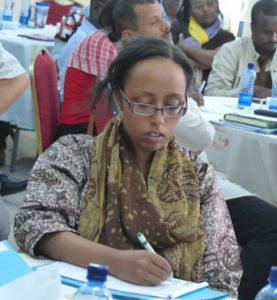
Kenya is a country where local and international NGOs have been working hand-in-hand since independence 50 years ago. If you visit Nairobi as a tourist, businessperson, humanitarian or development worker, you will quickly understand the role that donor dollars play.
We first became interested in Kenyan LNGOs on assignment early last year, when we were introduced to Adeso, a fast-growing NGO founded in Somalia 20 years ago, now headquartered in Nairobi and operating in three countries of the Horn of Africa. Adeso had recently been awarded a $50 million dollar grant from USAID for resilience-building in Northern Kenya. The award was virtually unprecedented for a non-US organization, and the challenges immense. We have been working with Adeso ever since, helping to guide and assist them on a range of organizational development activities to effectively manage their growth.
At the same time, LINC began collaborating with the Kenya National Council of NGOs, an umbrella group composed of thousands of NGOs registered in Kenya and charged with, among other things, building member capacity. In February 2014, LINC presented to more than 30 participating Kenyan NGOs outlining strategies for effective partnerships and lasting investments in institutional capacity. “LINC’s practical approach to fundraising, knowledge of what makes a successful organization, and understanding of the challenges facing local NGOs is exactly what our members are looking for,” said NGO Council of Kenya executive Fred Olendo at the conclusion of the event . “We see a number of promising opportunities for partnership with LINC.”
Taking our organizational capacity development work to the field, we recently partnered with Mercy Corps to conduct a pilot of LINC’s Organizational Network Analysis (ONA) tool in the northern areas of Kenya. Recognizing that NGOs are actors within larger systems, the ONA assesses social capital of NGOs and the networks in which they operate. This assists project designers and managers to better select partners, identify interventions, and track the progress of both NGOs and their networks. We conducted the first phase of our analysis in the Wajir and Garissa counties of northern Kenya, with follow-up currently pending.
